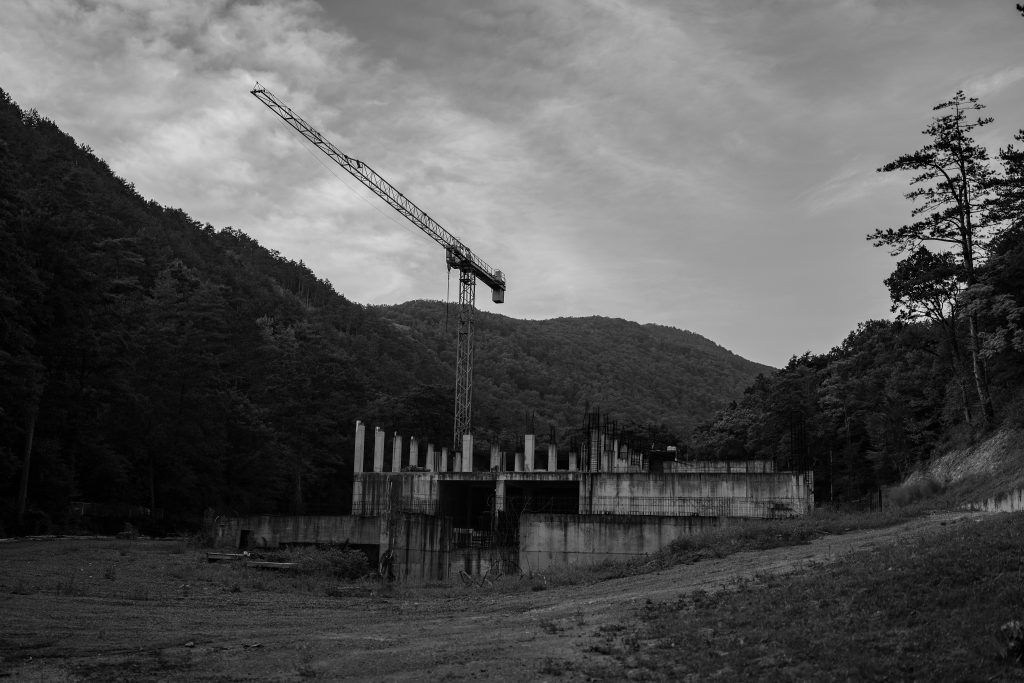In the world of business, ensuring the safety of your workplace and employees is not only a moral obligation but also a legal requirement. HR compliance for workplace safety plays a crucial role in safeguarding the well-being of your workforce and minimizing potential legal risks. By implementing comprehensive compliance measures, you not only create a secure and productive work environment, but also protect your business from potential liabilities. In this article, we will explore the importance of HR compliance for workplace safety, providing you with valuable insights and practical guidance to navigate this complex area of law.

Understanding HR Compliance for Workplace Safety
In today’s business landscape, ensuring workplace safety is not only essential for the well-being of employees, but it is also a legal requirement for employers. Human Resources (HR) compliance plays a crucial role in upholding workplace safety standards and regulations. HR compliance refers to the adherence to laws, regulations, and policies that govern employment practices, including those related to workplace safety. By understanding HR compliance for workplace safety, businesses can protect their employees from potential hazards, maintain a productive work environment, and mitigate legal and financial risks.
What is HR Compliance?
HR compliance encompasses the set of regulations, policies, and procedures that businesses must adhere to in order to meet legal requirements and ethical standards in the workplace. It involves ensuring that HR practices and policies align with local, state, and federal laws governing employment, labor, safety, and discrimination. HR compliance for workplace safety specifically focuses on the measures implemented to identify, prevent, and address potential hazards and risks that can impact the well-being of employees.
The Importance of Workplace Safety
Workplace safety is of paramount importance for both employers and employees. Beyond safeguarding the physical and mental well-being of individuals, a safe work environment fosters employee satisfaction, engagement, and productivity. It helps in minimizing absenteeism and turnover rates, reducing the likelihood of costly accidents or lawsuits, and maintaining a positive corporate image. By prioritizing workplace safety, businesses can establish a strong foundation for success and demonstrate their commitment to the welfare of their workforce.
The Role of HR in Ensuring Workplace Safety
HR departments play a fundamental role in ensuring workplace safety. They are responsible for developing, implementing, and managing policies and procedures that promote a safe work environment. HR professionals collaborate with management, employees, and relevant regulatory bodies to establish industry-specific safety protocols and training programs, and to ensure compliance with applicable laws and regulations. They also act as a resource for employees, addressing concerns, providing guidance, and fostering a safety-conscious culture within the organization.
Creating a Safe Work Environment
Creating a safe work environment involves identifying potential safety hazards, implementing appropriate policies and procedures, and providing training and education to employees.
Identifying Safety Hazards
One of the first steps in creating a safe work environment is to identify potential safety hazards. This involves conducting comprehensive risk assessments and inspections of the workplace, including physical spaces, equipment, and processes. By identifying potential hazards such as faulty machinery, inadequate lighting, or unsafe working conditions, HR professionals can develop strategies to mitigate risks and prevent accidents or injuries.
Implementing Safety Policies and Procedures
Once safety hazards have been identified, it is crucial to develop and implement effective safety policies and procedures. These policies should outline clear guidelines and protocols for employees to follow in order to maintain a safe work environment. HR professionals collaborate with management and relevant stakeholders to develop policies that address specific safety concerns, such as emergency evacuation procedures, use of personal protective equipment (PPE), and reporting of safety incidents. Regular reviews and updates of these policies are essential to ensure ongoing compliance and effectiveness.
Providing Training and Education
Ensuring that employees are equipped with the necessary knowledge and skills to perform their jobs safely is essential for maintaining a safe work environment. HR professionals play a key role in providing safety training and education programs to employees. These programs may cover topics such as hazard recognition, safe work practices, proper use of equipment, and emergency response procedures. Ongoing training and education efforts ensure that employees are aware of potential risks and are empowered to make informed decisions and actions to protect themselves and their colleagues.
Complying with Occupational Health and Safety Regulations
Complying with occupational health and safety (OHS) regulations is a critical aspect of HR compliance for workplace safety. Understanding and adhering to OHS regulations helps businesses establish and maintain a safe work environment while mitigating legal and financial risks.
Understanding OSHA Regulations
The Occupational Safety and Health Administration (OSHA) is a federal agency responsible for enforcing health and safety regulations in the United States. OSHA regulations apply to most private sector employers and aim to protect employees from workplace hazards. These regulations cover a wide range of topics, including but not limited to, hazard communication, electrical safety, personal protective equipment, and recordkeeping. HR professionals must familiarize themselves with OSHA regulations applicable to their industry and ensure compliance to prevent potential violations and penalties.
Maintaining OSHA Compliance
Maintaining OSHA compliance involves ongoing efforts to meet the regulatory requirements set forth by the agency. HR professionals should regularly review OSHA standards, assess the workplace for potential hazards, and implement appropriate controls to mitigate risks. This may include conducting regular inspections, monitoring compliance with safety protocols, and maintaining accurate records of safety-related incidents and training. By proactively identifying and addressing areas of non-compliance, businesses can reduce the risk of OSHA citations, fines, and reputational damage.
Creating an OSHA Safety Plan
An OSHA safety plan is a systematic approach to ensure workplace safety and compliance with OSHA regulations. HR professionals are responsible for developing and implementing such a plan in collaboration with relevant stakeholders. The plan should outline policies, procedures, and practices tailored to the specific needs and risks of the workplace. It should address areas such as hazard communication, emergency response, training requirements, and recordkeeping. By establishing an OSHA safety plan, businesses can demonstrate their commitment to the well-being of their workforce and minimize the likelihood of safety incidents.
Developing a Safety Culture
Developing a safety culture within an organization is crucial for creating a sustainable and proactive approach to workplace safety. HR professionals play a vital role in promoting employee engagement, encouraging reporting of safety incidents, and recognizing and rewarding safety excellence.
Promoting Employee Engagement
Engaging employees in workplace safety is essential for creating a culture of safety. HR professionals can promote employee engagement by involving employees in safety-related decision-making processes, encouraging their input and feedback, and providing opportunities for training and development. Regular communication and open dialogue between HR and employees help foster a sense of ownership and responsibility for workplace safety.
Encouraging Reporting of Safety Incidents
Creating an environment where employees feel comfortable reporting safety incidents is crucial for identifying potential risks and addressing them promptly. HR professionals should establish a reporting system that allows employees to confidentially report safety concerns, near misses, or accidents. By reassuring employees that their reports will be taken seriously and that there will be no retaliation for reporting, trust and transparency can be fostered, leading to a safer work environment.
Recognizing and Rewarding Safety Excellence
Acknowledging and rewarding safety excellence is an effective way to reinforce a safety culture within an organization. HR professionals can implement recognition programs that celebrate employees who consistently demonstrate safe work practices or contribute to improving workplace safety. This can include incentives, awards, or certificates of recognition. By recognizing and rewarding safety excellence, businesses reinforce positive behaviors and encourage a collective commitment to maintaining a safe work environment.
Managing Workers’ Compensation Claims
Workers’ compensation is a form of insurance that provides medical and wage replacement benefits to employees who suffer work-related injuries or illnesses. HR professionals are responsible for navigating the workers’ compensation process, understanding applicable laws, and ensuring compliance.
Understanding Workers’ Compensation Laws
Workers’ compensation laws vary by jurisdiction, but they generally require employers to provide benefits to employees who sustain work-related injuries or illnesses. HR professionals should familiarize themselves with the specific workers’ compensation laws applicable to their location and industry. This includes understanding eligibility criteria, reporting requirements, and the benefits available to employees. By understanding these laws, HR professionals can effectively manage workers’ compensation claims and protect the interests of both the employees and the organization.
Reporting and Investigating Workplace Injuries
In the event of a workplace injury or illness, HR professionals play a critical role in facilitating the reporting and investigation process. Employees should be informed of the reporting procedures and encouraged to report any work-related injuries promptly. HR professionals should ensure that proper documentation is completed, including incident reports, medical records, and witness statements. It is essential to conduct a thorough investigation to determine the cause of the injury and prevent similar incidents in the future.
Navigating the Workers’ Compensation Process
Navigating the workers’ compensation process can be complex and time-consuming. HR professionals must guide employees through the process, ensuring that they receive appropriate medical treatment and timely compensation. This may involve working closely with insurance providers, medical professionals, and legal counsel to gather necessary documentation, review claims, and facilitate communication between all parties involved. By guiding employees through the workers’ compensation process, HR professionals help ensure that employees receive the support they need while protecting the organization’s interests.
Addressing Workplace Violence and Harassment
Workplace violence and harassment can have a significant impact on employees’ safety, well-being, and productivity. HR professionals must take proactive measures to prevent and address these issues, creating a safe and respectful work environment.
Preventing and Responding to Workplace Violence
Preventing workplace violence requires a comprehensive approach that includes risk assessment, policies, training, and a reporting mechanism. HR professionals should develop and implement policies and procedures that clearly define unacceptable behavior, establish reporting channels, and outline appropriate consequences for violations. Training programs should educate employees on recognizing potential warning signs of violence, conflict resolution strategies, and how to respond in emergency situations. Regular communication and awareness campaigns can promote a culture of respect and prevent violence in the workplace.
Preventing and Addressing Workplace Harassment
Workplace harassment can create an unsafe and hostile work environment. HR professionals must establish a zero-tolerance policy for harassment and implement effective prevention strategies. This includes educating employees on what constitutes harassment, establishing reporting mechanisms, thoroughly investigating complaints, and taking appropriate disciplinary action against offenders. HR professionals should also provide resources and support to victims of harassment, ensuring their safety, well-being, and confidentiality throughout the process.
Creating a Zero-Tolerance Policy
A zero-tolerance policy communicates a strong message that workplace safety and respect are non-negotiable. HR professionals should develop and enforce a zero-tolerance policy for workplace violence, harassment, and any other behaviors that threaten the well-being of employees. This policy should clearly define prohibited conduct, specify reporting procedures, and outline the consequences for offenders. By creating a clear policy and consistently enforcing it, HR professionals can foster a safe and inclusive work environment where employees can thrive.

Dealing with Substance Abuse in the Workplace
Substance abuse in the workplace can compromise the safety, productivity, and well-being of employees. HR professionals play a crucial role in implementing programs to address employee substance abuse issues and create a supportive environment for those seeking assistance.
Implementing Drug Testing Programs
Drug testing programs are an effective tool for identifying substance abuse in the workplace. HR professionals should establish drug testing policies that comply with applicable laws and regulations. These policies should clearly communicate the circumstances under which drug testing may occur, the methods to be used, and the consequences for a positive test result. By implementing drug testing programs, businesses can deter substance abuse, ensure a safe work environment, and protect the well-being of their employees.
Addressing Employee Substance Abuse Issues
When an employee is found to have a substance abuse problem or fails a drug test, HR professionals should address the issue promptly and with sensitivity. They should establish protocols for taking appropriate disciplinary actions, seeking treatment options, and providing necessary support throughout the process. This may involve referring employees to Employee Assistance Programs (EAPs) or external rehabilitation resources to help them overcome addiction. HR professionals must balance the need for workplace safety with a compassionate and supportive approach to addressing substance abuse.
Providing Resources for Employee Assistance
HR professionals should ensure that employees have access to resources and support for addressing substance abuse issues. This includes providing information on rehabilitation programs, counseling services, and health insurance coverage for treatment. By offering resources and support, HR professionals demonstrate empathy and create an environment where employees feel safe and encouraged to seek assistance.
Managing Ergonomics and Physical Well-being
Ergonomics plays a crucial role in maintaining the physical well-being of employees. HR professionals should implement measures to design workstations for optimal safety and comfort, address musculoskeletal disorders, and promote physical well-being.
Designing Workstations for Optimal Safety and Comfort
HR professionals should collaborate with management and facilities teams to ensure that workstations are designed ergonomically. This involves selecting appropriate furniture, equipment, and tools that reduce the risk of musculoskeletal disorders and promote proper posture. Workstations should be adjustable to accommodate individuals with different body types and preferences. Regular assessments and adjustments should be made to address any emerging issues and ensure ongoing ergonomic compliance.
Addressing Musculoskeletal Disorders
Musculoskeletal disorders, such as back pain, carpal tunnel syndrome, and strains, can significantly impact productivity and employee well-being. HR professionals should implement programs that address these disorders, including early identification, treatment options, and workplace modifications. This may involve providing ergonomic training, offering stretching exercises, and promoting regular breaks and change of posture. By addressing musculoskeletal disorders, HR professionals help prevent workplace injuries and promote the physical well-being of employees.
Promoting Physical Well-being
Physical well-being is essential for overall employee health and safety. HR professionals should collaborate with wellness committees or external resources to develop initiatives that promote physical well-being. This may include organizing fitness challenges, offering health screenings and vaccinations, providing access to wellness programs, or encouraging physical activity during breaks. By promoting physical well-being, HR professionals contribute to a healthier and more productive workforce.

Handling Employee Accidents and Emergencies
Accidents and emergencies can occur even in the safest work environments. HR professionals should be prepared to handle these situations promptly and effectively, ensuring employee safety and a smooth post-incident recovery process.
Establishing Emergency Preparedness Plans
Effective emergency preparedness is crucial for minimizing harm and ensuring the safety of employees during critical situations. HR professionals should collaborate with relevant stakeholders to establish comprehensive emergency preparedness plans. These plans should include evacuation procedures, communication protocols, emergency contact information, and training for employees. Regular drills and refreshers should be conducted to familiarize employees with emergency procedures and to identify any areas that may need improvement.
Responding to Workplace Accidents
In the event of a workplace accident or emergency, HR professionals must respond quickly and appropriately to ensure the well-being of employees and mitigate potential risks. This involves immediately assessing the situation, providing first aid or medical assistance as necessary, and contacting emergency services if needed. HR professionals should also communicate with management, affected employees, and relevant stakeholders to coordinate the necessary actions and support. Thorough documentation of the incident and any subsequent actions is essential for compliance and post-incident analysis.
Managing Post-Incident Recovery
Following a workplace accident or emergency, HR professionals must support employees through the recovery process. This may include facilitating access to medical care, arranging for counseling or psychological support, and helping employees navigate the workers’ compensation process. HR professionals should maintain open lines of communication with affected employees and provide resources and support to aid their physical and emotional recovery. By proactively supporting post-incident recovery, businesses can foster a sense of care and well-being within their workforce.
FAQs about HR Compliance for Workplace Safety
What are the legal responsibilities of employers regarding workplace safety?
Employers have a legal responsibility to provide a safe work environment for their employees. This includes complying with relevant laws and regulations, identifying and addressing potential safety hazards, providing necessary training and education, and implementing appropriate policies and procedures to prevent accidents or injuries.
How can HR promote a culture of workplace safety?
HR can promote a culture of workplace safety by engaging employees in safety initiatives, encouraging the reporting of safety incidents, recognizing and rewarding safety excellence, and establishing clear communication channels for sharing safety-related information. HR should also ensure that safety policies and procedures are effectively communicated and regularly updated to reflect changing regulations and best practices.
What steps should HR take in the event of a workplace injury?
In the event of a workplace injury, HR should respond promptly by providing first aid or medical attention, documenting the incident and any relevant details, and reporting the incident to relevant authorities as required by law. HR should also communicate with the injured employee, provide support and resources for medical treatment, and guide them through the workers’ compensation process, including filing necessary claims and paperwork.
Are there any privacy considerations when implementing drug testing programs?
Yes, there are privacy considerations to be mindful of when implementing drug testing programs. HR should ensure that drug testing is conducted in a manner that respects employee privacy rights and complies with applicable laws and regulations. This may include obtaining written consent, using professional testing facilities, maintaining confidentiality of test results, and providing employees with information on their rights and options.
How can HR ensure employees are trained on emergency procedures?
HR can ensure employees are trained on emergency procedures by developing comprehensive emergency preparedness plans, conducting regular drills and training sessions, and providing ongoing communication and reminders. HR should also make training materials easily accessible, provide opportunities for employee feedback and questions, and ensure that new employees receive proper onboarding and orientation regarding emergency procedures.













